Content Marketing
To understand the “how-to” of content marketing in a B2B scenario let us first understand what content marketing is, what it is not and how it is different from the other forms of marketing.
In today’s business environment, marketers consider content marketing as a strategy rather than tactics and rightly so. Content is no more just product specifications, service ratings or click baits. It’s about engagement, connection and trust. It is the process of creating and distributing valuable, relevant and consistently high quality content to attract, acquire and engage a clearly defined audience with the objective of driving profitable consumer action especially in the long run.
The above definition has two important aspect that need to be highlighted. To begin with, the content need to be valuable, useful and relevant and secondly it should be beneficial in the long run. Pointless communication will not drive repeat customers and fail to build the loyal customer base which the content marketing aims for.
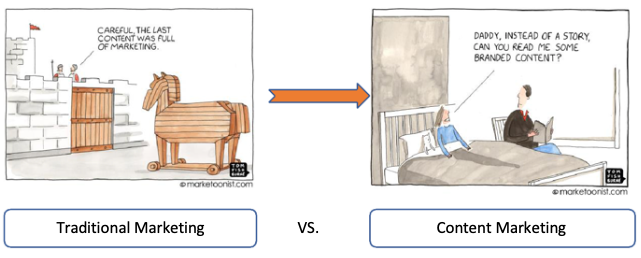
To understand the difference between content and traditional marketing let us consider the example of “Coffy” a company which manufactures coffee machines to be sold to restaurants. As per the traditional marketing methods the company will appoint sales persons to visit restaurants and sell the product based on its specifications and compare it with the current products available in market. However, this will not matter to a restaurant owner who hears numerous pitches daily.
Content marketing takes and altogether different route. It tries to understand the pain points of its customers and see how their product solves them. Coffy can educate its customers about cost saving practices in the restaurant industry and different ways to delight customer. Thus, Coffy is no more just a product company but a friend who understand the owner’s business and is trying to help it grow. Customer loyalty is an asset that Coffy can then use to push their product. They can demonstrate how the better consistency of coffee with lesser milk by their machine allow the owner of the restaurant to give a complementary cookie with the coffee to delight the customers.
Thus, content marketing is not a gimmick or tactics to get quick attention but a path to create loyal customer base for sustainable long term growth. In the above example the seller takes on the role of a guide and educates their customers on better business practices and way to monetize them for profits.
Content marketing can be aptly considered as a strategic business activity as it creates on of the most valued asset in the modern business environment – “subscribed audience”. These audiences may not bring quick revenue as soon as you catch their attention but over the long term will exhibit desired behaviors like willingness to share data, open to upselling and cross selling opportunities, brand evangelism etc. thus increasing their customer life time value (LTV). To make this possible content should be designed to add a valuable new dimension to all the marketing and advertising initiatives.
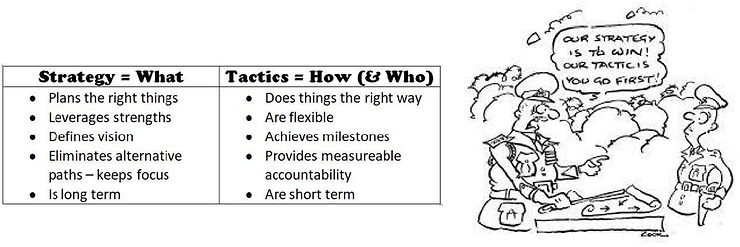
Content Marketing in a B2B scenario
All that sets B2B content marketing apart from other types of content marketing is that it used exclusively by businesses, for businesses. This is not run-of-the-mill consumer-facing content.
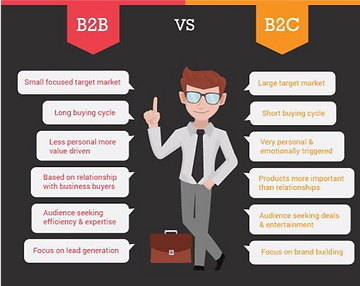
For any content to be effective as a strategy it need three essential qualities. It should be useful, engaging and of superior quality. However, B2B marketing requires an additional ingredient i.e., the content should be actionable. If the reader cannot apply the elements of your content to their own work or business, it has missed the mark. Being seen and renowned as a leading resource for professionals in your industry should be the top priority. B2B content must balance of all the above four elements even more perfectly than B2C content. This does not imply that boring and blunt content will be rewarded but the content cannot be merely informational or entertaining. The idea here being to gain competitive advantage by generating original and valuable content and be the thought leader in the industry.
How To Do B2B Content Marketing?
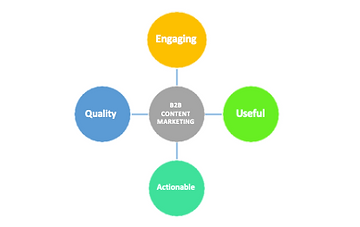
Step 1: Purpose and Goals (Why??)
Setting the purpose and goals is necessary to ensure the consistency in all the communications. No building can stand on flimsy foundation. Marketers need to identify what is their end purpose, what should be their tone and style of communication and what are they going to say. A clearly defined goal goes a long way in making the strategies come to life.
Step 2: Audience (Who??)
A B2B content marketer must know his/her target audience inside out. He/she must understand their potential customers(businesses) what it stands for, what it lacks, what drives it, its culture, people, passion, emotions and strategies. This helps the marketer to come up with relevant and engaging content for their consumers. The content should introduce new avenues of growth and criticize the redundant practices, all while it resonates with the ideas and principles of the clients.
To understand this let us look at Amex’s content strategy. Amex focuses its content around the needs of small businesses and entrepreneurs. This can be seen from the wide range of articles published by them on topics varying from time management, productivity to accounting and budgeting. These targeted contents provide high quality actionable content (often by celebrity authors) to budding business owners and entrepreneurs who are their potential customers in the future.
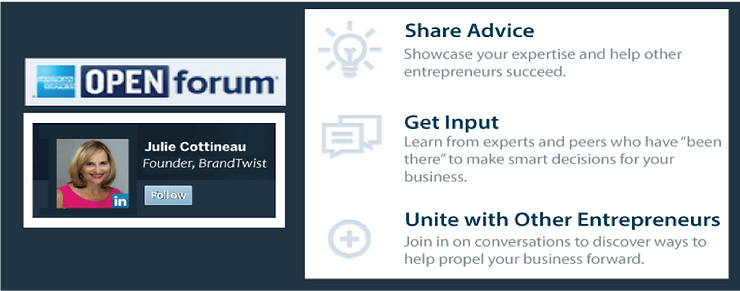
Step 3: Developing superior content consistently. (How??)
The major challenge of content marketing lies in consistently producing content of high quality that is useful and one notch above the competitors. The content need to be genuine and original. All content marketers should strive to make their company the thought leaders in the field. This requires dedicated research and a constant analysis of the industry. The firm should be aware of the changes in the client’s industry, how new threats and opportunities arise and how the clients can benefit from them. The content can demonstrate new and improved avenues of growth for its clients or highlight the dangers of its current strategies and suggest ways to improve.
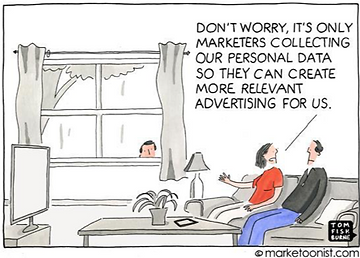
GE for example, are the pioneers of content marketing when it comes to the technology landscape of their customers. It’s online magazine, “The Txchnologist”, is the gold standard for any content related to latest technology. The Txchnologist’s content focuses on cutting-edge technological developments – the kind pioneered by GE’s immense R&D teams – in a way that lets decision makers see not only the benefits of specific GE technologies, but also how technology is shaping the world in a wider sense.
Content Marketing Institute (CMI) is another leading example for content marketing done right. The annual report by CMI, released by their research team after a detailed study of the content marketing industry for the year, is the go to destination to understand the trends and shifts in the industry.

Step 4: Testing and fine tuning (When??)
The content need to be tested within a limited sample of consumers and fine-tuned before releasing it to the target audience for the best results. Firms can use small groups of evangelists and loyalists to study the effectiveness of the content generated. This method helps in generating sharp, targeted content at low costs and efforts with maximum return. It is a common practice for many firms to use social media platforms like Facebook and Twitter to understand the traction for an idea and then implement the content on a larger scale.
Step 5: Promotion (Where??)
With the amount of content getting generated and circulated in the current era, relying on organic growth is not enough. The marketers should find cost-effective and focused methods to make the information available to their audiences. Social media and digital marketing need to be leveraged to reach out to the target group. They can use paid promotion channels, seek the assistance of social media influencers, leverage interest groups and loyalists, and employ retargeting to spread the content to their target audience.
As discussed above, CMI gets experts and celebrity marketers to contribute to their reports and blogs which in turn gets shared by them to attract traffic and subscribers to their website.
Step 6: Measure, and learn. (And??)
The metrics to measure the impact of the content should be chosen to understand how the audience receive it and what changes need to be done to improve its quality and thereby the quality of the subscriber asset. It should not be to understand the direct impact of each information, or to draw a direct line to the revenue earned. As mentioned above, content marketing aims at creating a long-lasting asset (a dedicated customer base) and not temporary bump in revenues. The quality of the subscribers, their life time value(LTV), strength of “flywheel effect” due to the content etc. can be some of the metrics used to track and assess the performance of content marketing initiatives, instead of directly measuring the short-term revenue, customer acquisition cost (CAC) and immediate growth.
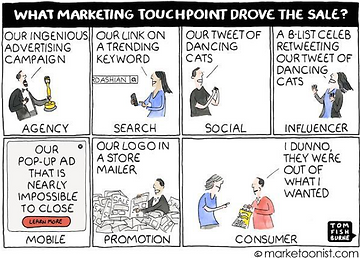
Conclusion
The current business stage is witnessing firms pursuing customer relations beyond transactions and revenue, and are constantly looking for avenues to reach to customers and engage them. Content marketing strategies are clearly emerging as one of the key aspect of acquiring and retaining high potential customers. Both B2B and B2C firms are investing heavily in generating high value content and making it available for their target audience. As the content consumer over internet increases day by day, dedicated resources and well laid strategies for content will lead businesses to sustainable growth.
Leave a Reply